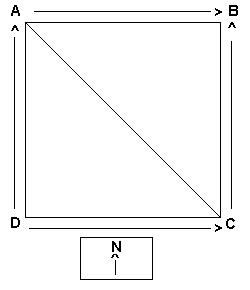Nov 07, 2025
Nov 07, 2025
The preceding article provided the introduction. Follows now, a step by step awareness for utilizing the knowledge to get into a balance which provides lasting happiness in all spheres of life. Traditionally, we call it Dharma, Artha, Kama and Moksha.
First, we have to be clear in our approach. We are not in the making of a text book or thesis. Recall, what our parents used to provide us as the basic guidance on healthful living. This, in no way takes the place of consultation in professional clinics. But, if sensibly adhered to, is -over the years- conducive to excellent physical foundation. It is easy to vouch for the benefits reaped as a result of those timely lessons.
The analogy holds good in other spheres also. Unanswered questions lead one to proceed with the search. Vastu may not be the final destination but is definitely a major milestone in the move. With a study of the observations, it is easy to trace a link of shortfalls and fulfillment to the corresponding features in the dwellings. Which irresistibly urges one to see how seekers may be saved from unhappiness by sensibly co-operating with the forces of Nature in designing our habitat.
We must discern that the nature of real benefits is permanent as distinct from being transient. The latter are often brought about by short cuts, which include cunning and deceit. Vastu is an edifice science taking into account shape and forms of areas and structures (where we reside, move and work) as also their interaction with geographical factors, such as, expanse, mass, elevation, depression, streams, directions and magnetic meridian. These are no abstruse expressions but plain facts, off the realm of the esoteric. We learn how to make our homes, parks and business premises conducive to pious, peaceful and successful living.
The suitability of any place for this purpose is related to the degree of balance obtaining therein. This balance depends on several factors. Of these, three are fundamental as follows:
1. Open space should be provided more in the north and the east as compared to the south and the west. It extends in the form of downward slope, depression and water on surface or just below.
2. Elevation and mass should be placed more on the west and the south as compared to the east and the north. This extends in the form of ridge, hill, wall and the mass/weight borne therein.
 3. This basic principle -- of openness and lightness as opposed to cover and heaviness -- is a guide in all planning.
3. This basic principle -- of openness and lightness as opposed to cover and heaviness -- is a guide in all planning.
4. Slope. It is concomitant to the aforesaid principle. The diagram alongside would be helpful. ABCD is a given piece of land. Angle at D shows the highest point and angle at B, the lowest point to give maximum favorable balance in the land. The arrows indicate the direction in which water would drain. The downwards slope would be from D to A and/or A to B. Similarly it would be from D to C and/or C to B or overall diagonally from D to B. This will keep the area ADC higher than the area ABC. It follows that ideally the land will have slope from west to east or south to north and/or south-west to north-east.
5. These simple rules are to be followed on to various locations which we will take up gradually.
Areas Outdoors
We begin with areas outdoors that is public places. Take, for instance, an expanse of land bound in the north by a stream flowing eastward or in the east by a river flowing northward. To the west (or/and to the south) the land has an elevated land mass such as a hill or a mound. Such a land is eminently suitable for outdoor activities like carnival, rally, sports, etc.
Deviation or reversal of the aforesaid features correspondingly renders the land unsuitable for successful deployment. It is not necessary for these features to be natural. Man made waterways, pools, embankments, etc. invite the same phenomena to operate. It follows that in any given area the location of open spaces, basement, elevations, etc. should be set accordingly.
There are cases where a plot of land is found to be landlocked and the aforesaid ideal conditions do not obtain. Recourse, then, is available to various effective remedial measures which may be taken up later.
Premises
From the outside we will now move on to premises. This covers the periphery, the open space around the structure and then the interiors. Later, we will also take up specific issues related for instance to motor vehicles, employees, tenants, matrimonial settlements, etc. These will appear in subsequent articles.
21-Apr-2000
More by : Aditya Kumar Varman